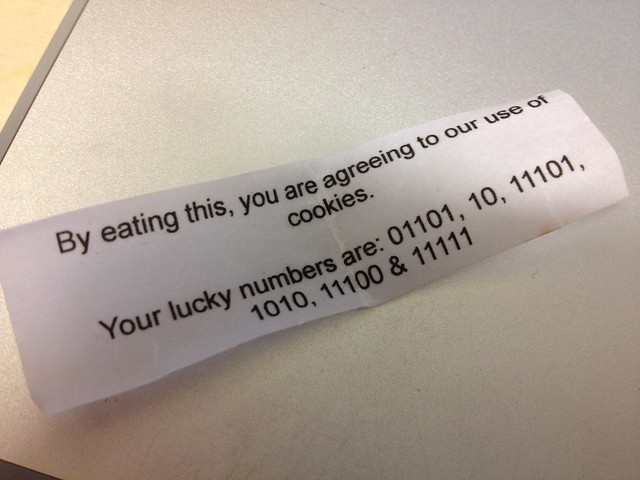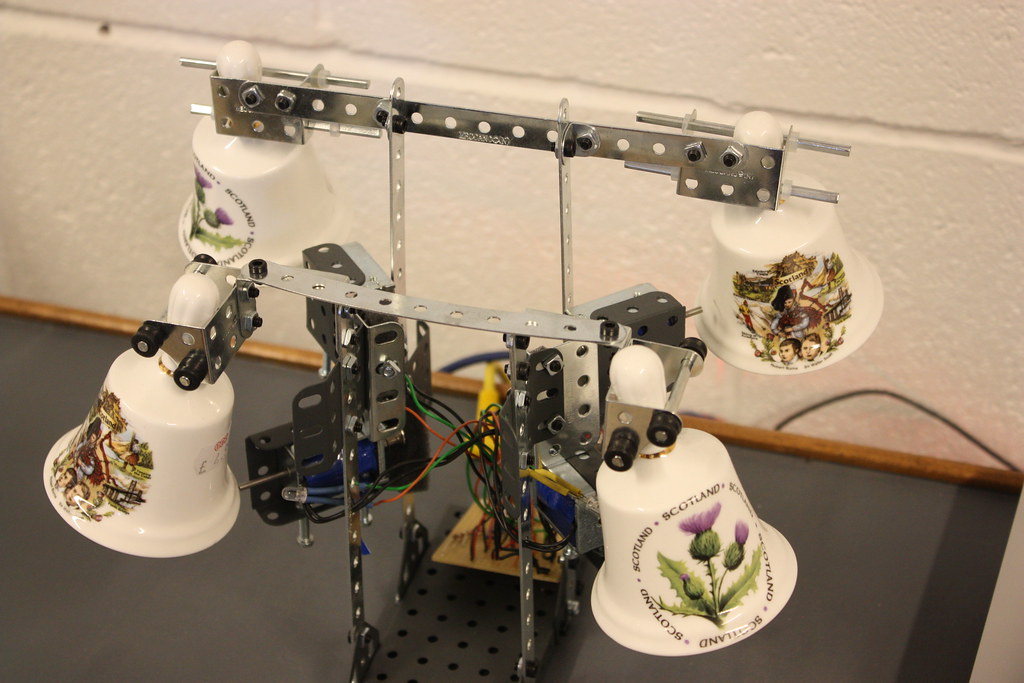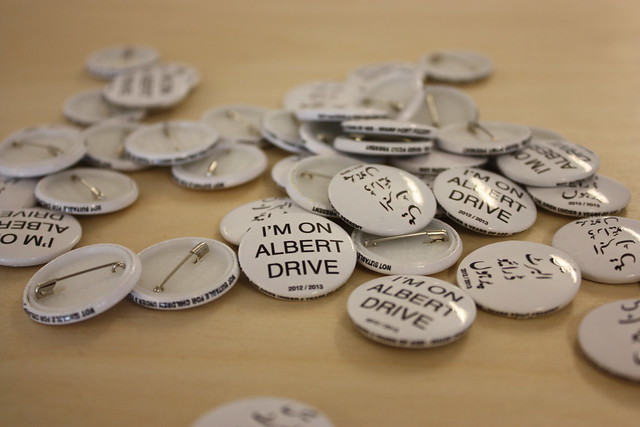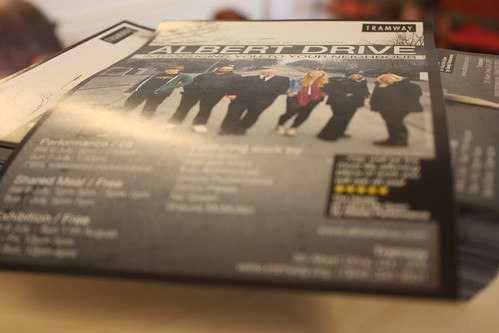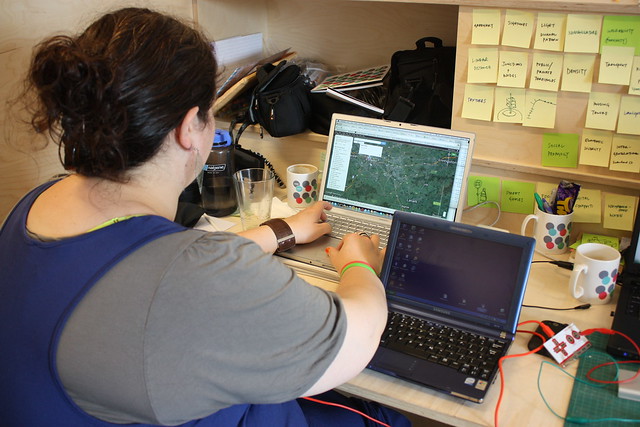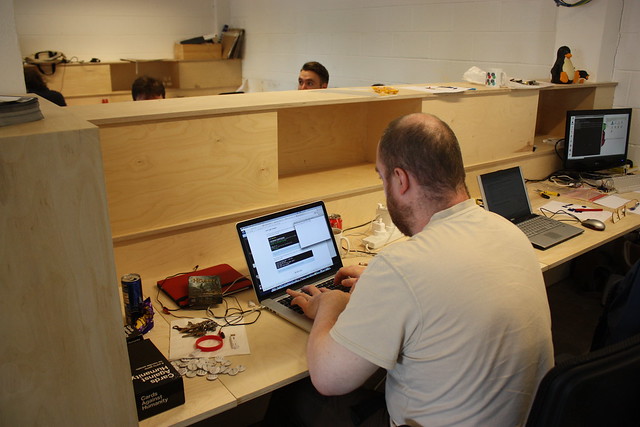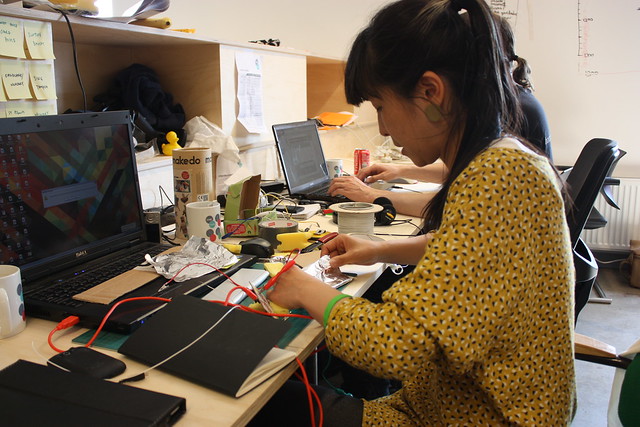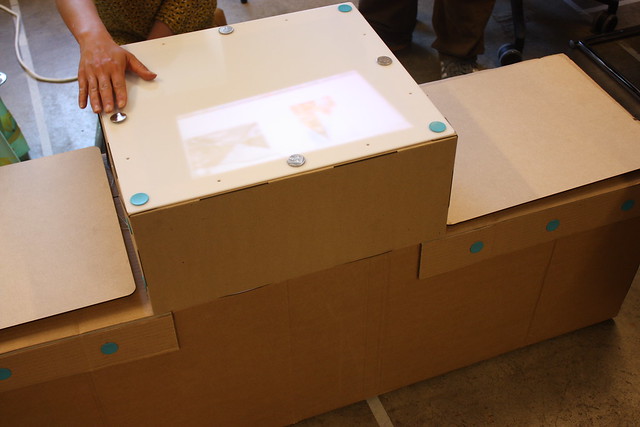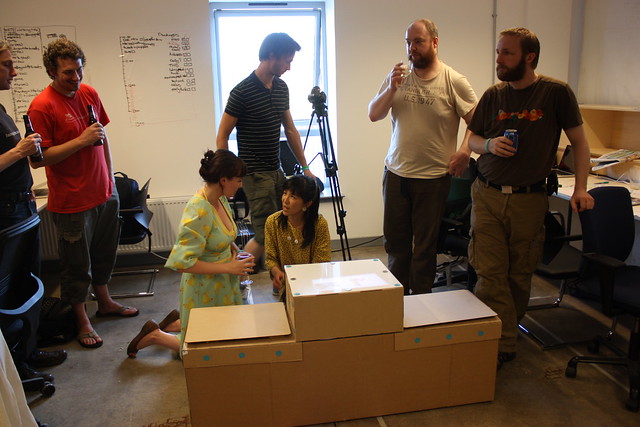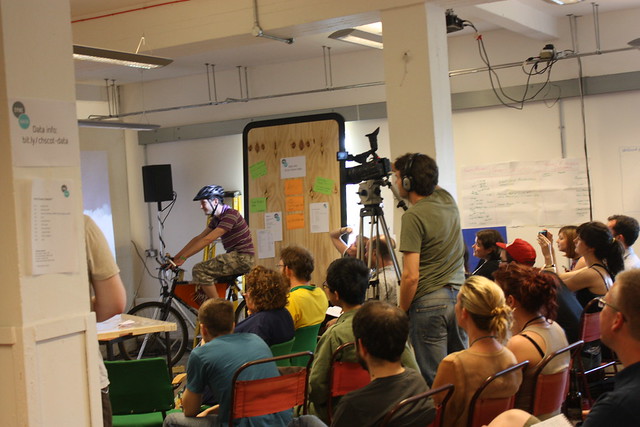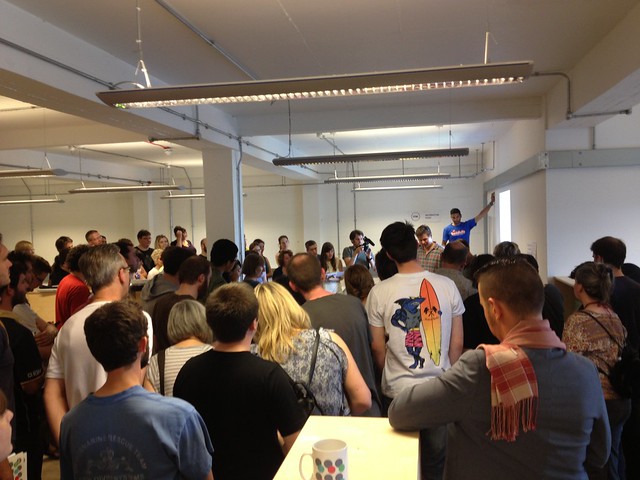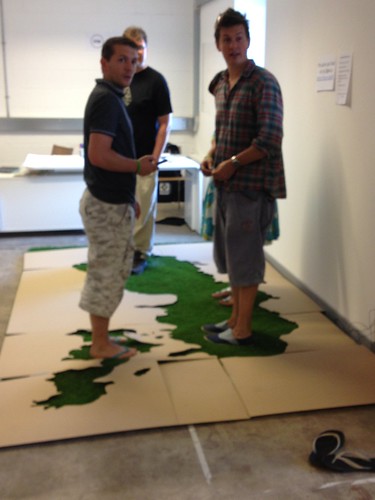Today I am dipping in and out (around other meetings) of Interactive Scotland@Turing, the conference day of the Turing Festival. It’s being live streamed over on the AmbITion Scotland website.
I have just caught the tail end of “Big data (and doing something with it)” – Dave Coplin, Director of Search and Futurologist, Microsoft. Designing big data, privacy, and security in from the beginning was the big message there. Also that your child’s first search engine query is a moment of huge pride.
Next up is “Information is beautiful – a picture paints a thousand words” – John Loudon, Head of Multimedia, BiP Solutions. He’s basically giving the big picture on infographics and reminding the audience that infographics are hundreds of years old. He’s running through several examples, looking at how effective they are and the power of graphics even if the text is in another language – a great illustration that infographics should make basic sense even before you begin labelling. He’s also reminding us of maps as infographics and innovations such as contour lines.
Infographics shouldn’t just be about clicks, it should be about learning, discovery. It should represent interesting research or data. They need to be engaging. BiP now use infographics for their own corporate management – looking for demand on their helpdesk to plan holidays say. The company produce a magazine for the MoD and decided to start trialling infographics in this. We had the data, then we wanted to know what the key questions are here for readers. Asking those questions to the data made for surprises. After checking and double checking it became clear that those surprises were correct representations of the data – that’s really useful for us and for our readers.
Some key lessons for infographics:
- Don’t just use templates.
- Don’t be over complex – use a basic table if that is better.
- Tell a story, have great content, and make it relevant and right for your audience.
- Find data to compare and contrast, data on it’s own can be quite boring so you have to draw out the interesting .
What are the benefits of data infographics? Well they should communicate information, they give you an opportunity to inform your audience and, yes, to share and be sociable.
And now… Richard Ayers, CEO, Seven League – “Ambassador, with this datatainment you are really spoiling us”
“I will be talking about how we use infographics in our work which is mainly in the sports and creative industries. I talk about something I call the “Foreign Office Strategy” for social media. The consulate have made decisions about relative merit of having a consulate in a particular area. Some run events, some do huge cultural work, some just stamp passports. Social media is like that – you have to make a decision over the merits of where and how much to engage in each area.
And data can be the same way. But you have to make sure you tell stories with that data and I’m going to talk
Film – BFI. the BFI is really the centre for film in Britain. They have a massic beautiful archive. They don’t just have film. There are 20k unpublished film scripts, cinema ephemera, personal papers, all press photos from Doctor Who. Even kids drawings – although in the modern era these are not kept but destroyed for child safety reasons. Behind the scenes images of Star Wars are in the archive… huge amounts of materials. But only 90,000 films are digitised. But all will be done, and the metadata will be good! But not all of that metadata is known – shooting location etc. That’s a crowdsourcing/wiki opportunity. I’m going to run through some stuff that is coming and welcome more suggestions, especially if they make BFI, a charity, a bit of money. One of the things that’s already in the works are Time Capsule – capturing the nations memories of viewing film; alternative forms of navigation – mind maps that show connections between films, directors etc; we’ve got 100 greats? as well. Now I get sick of that concept but I’m interested in people’s 100 greatest and then overlaying BFI knowledge and undestanding; film tracker – recommends upcoming films and connects to materials in the archive, sight and sound reviews etc. And we haven’t even got to the API for SID (our Systems Information Database) and that will create huge opportunities to change things. So that’s film…
Onto sports… Datatainment is a term I’ve blogged about a lot. I love sport, football isn’t my favourite but I love sport. But there is an increadible level of sports data. This is sprint speeds, jump heights, tackles, etc. There was a campaign for Heinekan – a game, kind of like betting, on particular players. It was ok and interactive but not great. More exciting is the Major League Baseball app which lets you switch between footage, commentary, stats, alternative views, pitch images – really really nice. Imagine if we could do that with cricket? There are so many stats and if you are a fan you want all that! In the modern era at Lords they show scores from Teletext!
Lets talk about LimeLight. They have been backroom guys. Sports England says that engagement in mainstream sport is kind of holding steady but the areas in growth is 5ks, 10ks, triathlon, cycling etc. There is a tremendous involvement in personal sporting activity. I think that’s great. LimeLight organised the road race, time trial, marathons, and triathlon swim. They also run those kinds of the event – with 30-40k participants – all through the year. And there are chips on all of these competitors… the things you can do. There is a tendency to look at participants as individuals but he is also a one-man team – with support structures, there are loads of people supporting these people here. There is a huge opportunity here… LimeLight don’t put on a race for 30k people but a 9 month sports engagement campaign for 110k people.
MyPace is a great app here – it tracks the race and lets you replay dots on the map, picks out routes of winners etc. It uses simple data points here. What’s interesting is that for the race coming up in October we are putting maps and interactive boards and an app so that spectators can know what’s doing on throughout, enabling better engagement and support. The BBC is starting to do datatainment – presenting old school TV over the top. We are seeing line graphs in the Olympics coverage. New to TV but sports analysts have long been hugely into data but it’s never been used to engage and interpolate the sport for the audience. On football and rugby the stats as is really don’t engage anyone but those that already know about the sport. The Olympics have really presented a possibility to make this data accessible. We also saw virtual world record markers on the pool. We also saw Emoto – Twitter sentiment analysis of the Olympics. I’m not a huge fan of sentiment analysis but it gives you an interesting view into what’s happening. The BBC showing relative heights and weights of athletes – and your own place in the scheme of things. And you could download the data table for all athletes…
And that brings me to Open Data. We’ve been doing lots of data work and products that will launch. But in the meantime we’ve been working on Manchester City Performance data – for last year – and making that freely available to play with and that’s groundbreaking.
Perhaps opening up that data will open those sports to those who have not previously engaged with them: we’ll have established the right data and social embassies.”
And with that I leave the livestream for a meeting but will return…
OK, it’s nearly 4pm and I have returned from a series of meetings and lunch to catch the last two hours of the conference…
I’ve dipped in mid-talk about Brewster which aggregates multiple profiles [just been investigating reviews and it appears that Brewster is useful for those in the US but not the UK at present]. Gavin Dutch has just commented that he is most excited by devices combining with the real world. Like tap-a-note – a hacking project for Evernote using a chip that you placed around the house – say on your fridge – and if you tapped that note you’d see alerts associated with that chip/object. Another panel member has been musing over web apps vs cloud apps – a nice poll of the room (full of geeks) indicate that they have trouble understanding just what the cloud is, and what is and is not a cloud app. Finally a panel member says that “hardware is red hot”. And that session (the end of “Put bangers in your mobile mashup”) closes on a prediction of hoverboards…
The folks at Dynamic Earth have headed for coffee so a wee bit of a break for the webstreamers here but up next are:
”Fragmentation & the State of Online Video” – Luke Gaydon, VP Operations EMEA, Brightcove
Luke will be talking about online video from the perspective of Brightcove, a cloud based content services provider. Our best known product is VideoCloud and I’ll be looking at this issue from this perspective. VideoCloud is everything to allow you to manage and distribute video, with around 4500 customers. Some of these customers include big media and non media brands and include EMI, Sky, STV etc. They are responsible for 800-900 million streams going through the VideoCloud platform.
“I wanted to dwell a little bit on some key moments in the history of online video… firstly a fashion show stream taken down by denial of service attack, Steve Jobs, US Elections, iPlayer and NetFlix, Hulu launches – online legal video for free, Obama’s inaugeration speech, launch of Apple TV, the Royal Wedding (2.9 M concurrent streams), Olympics 2012 (hugely outperforms that royal wedding number). This year US viewers will stream more online video than DVD and Blu-Ray combined.
I used to work at Channel 4 and I used to sell Big Brother. We had clips, we put them onto a RealMedia player. It was a simple workflow. But now video is increasingly complicated. You have the video library of short, long, on demand, live video. The libraries increase in size exponentially. Then the places/platforms that publishers want to distribute to: mobile apps and the mobile web, the website, set-top boxes, connected TVs, gaming console, and via Social Media through Facebook etc. Suddenly the workflow is much more complicated. So to put this into context. 100m households in the world own at least one connected TV, huge uptake of broadband and smartphones. But all these devices are different. Whilst we’ve seen video standards like HTML5 and h.264 and that is great but you will never get all device producers to agree.
When Warner Brothers released the Dark Knight they showed it via Facebook. That seemed bizarre to me but my young relatives sit there with Facebook open all day and it made sense to them. That’s just where they hang out online.
The big question around connected TVs is the extent within which people actually use their functionality. Apparently quite a lot of connected TVs don’t actually get connected… except in Germany where an onscreen prompt tells you to connect the TV up to the internet.”
And with that I had a wee interruption but note via Twitter that:
“ vid viewing on social networks grew 40% at end of March 2012 -becoming the home of TV & film views”
Back to the stream:
“I think I wanted to give you a view of where we are at and then share thoughts/musings and key trends we’ve seen developing in the last few years and see developing in the future.
- the notion of a “media company” needs reviewing. It’s not just a TV or Film or Publishing firm these days. Increasingly the notion of a traditional media company has been turned on it’s head. I remember Red Bull being a fizzy drink company but Red Bull has a TV channel, they have a commissioning department which commissions content for them. I was talking last night to someone asking if it’s long until Red Bull commission a feature film… apparently they already have! Marks and Spencers are creating content. You can put these sites on TV but you have to login to purchase – and logins via remotes are a nightmare.
- The rise of XBox as an entertainment platform, which goes hugely far beyond gaming.
- The iPhone and iPad are creating new expectations about how we interact with devices and consume content.
- Future of TV experiences. First screen display and consume, second screen for searching, controlling, interacting
- Finally… the most important thing is the content!”
“Social Media: television’s best new friend?” – Anthony Rose, Co-Founder & CTO, Zeebox
“I am going to do some Fringe inspired improv here as my theme is very much storytelling. As a programme maker can you engage with your audience directly and own that engagement rather than selling to a broadcaster, have them manage engagement. Broadcast is not just on TV but also on the web. Back when I headed up BBC iPlayer it was great that folk could watch content anywhere, anytime. But the best I was doing was watching the same TV, albeit time shifted. But how can we think of a new model? There are two takes here?
Well back in the 90s we made real time 3D graphic engine that allowed us to make interactive stories – we licensed content like Xena, Choose your own knightmare, etc. then writers created a story you could choose your own ending. It’s maybe like what can be done with sports views. When we started we had fairly grotty looking graphics but they improved. But the scriptwriters and storywriters had real issues. But it seems to be a left brain/right brain thing. Developers think brilliantly about logic but struggle with storytellers. I wanted storytellers to think about logic but it was super difficult. How do you bring interactivity to a medium we know and love well.
The other aspect is Microsoft’s foray into the TV space. In the 90s Microsoft were trying to sell an NT based TV platform. They made a video of the house of the future – everything had a screen – like the fridge and the toaster – and you could touch the screen and agree or disagree. They built a house of the future with these flatscreen TVs – but it was the exact same picture. Ten years of the finest minds hadn’t moved on. There is a really big challenge here to think ahead. The cost is great – an interactive TV is expensive for the future. And for the broadcaster to work for the small number of their huge audience who can interact is expensive and tricky. But the phone and ipad are bringing something in here, interactivity through a second screen. And I think the future is on-demand tv with syncronous experiences.
Sky brought 10% of company recently. We have a great product. Imagine you are sitting in front of your TV – you have your phone or tablet with you. You will never be without it one day! A few problems to solve with TV. You have to decide what to watch and you want a trusted authority to help you discover what’s on. And social comes in there soon. Zuckerberg reckons it’s your friends, Amazon would say that the recommendation engine will tell you, BBC or Guardian would say trusted authority. But wouldn’t it be great to have info delivered to your smartphone and tablets. These bring in interactions, transactional experience. Advertisers spend millions trying to sell you things but it’s a convoluted path, a one click experience works well.
Zeebox ingest live TV in the UK, we use speech analysis and the subtitles of that TV and extract meaning second by second. Our servers look for meaningful information – names, type of advert, etc. Wouldn’t it be great to see what is coming up soon? Well that’s the start screen for Zeebox in our newest version – brings in tweets etc. Can also see featured aspects – what celebrities are watching, your friends, what is being seen on Freeview if that is what you are using, what else is being watched on Sky if you use that etc. And you get privacy options there. Or you can just use EPG that includes friends and what they are watching. Zeebox can also just act as a remote control with a range of TV devices.
Zeebox can also be the next generation of “The Bar” – the Neilson panel of 1000 viewers. Real time analytics changes how TV can be monitored and understood.
Once upon a time you had to watch TV when it was being broadcast. Now you can time shift. But you will also be able to watch with others – create viewing partners. And you can also watch with celebrities based upon what they are sharing at that time. And you can see new conversations, links, self-generating tags etc. Everything becomes clickable. You can also look via Amazon. This is the beginning. Advertisers may buy a broad ad on TV and start to use second screens to personalise that. That really disrupts the model of advertising. Advertisers could buy a word on TV – you could show the ad whenever a word arises and you click for more info! It’s a bit like old iPlayer days… it’s about bringing interactivity into the programme.
We have a platform – OpenBox – to enable that one framework for multiple programmes. And that will open up to Developers via an API at some point. That’s based on HTML5. For example we did this for Eurovision – and could poll each entry, we could link to their albums for sale etc. For Sky we did Got To Dance where alternative commentaries were made available via presenters using Zeebox on iPad. Football is another great example here. An interactive way to monitor progress, find more info, and this was sponsored so also a way to generate income.
Finally this is all about analytics… broadcast isn’t stats rich but platforms allow a huge amount of data to be gathered, used, and understood. Data is the new oil.
A programme maker can’t be totally interactive with the audience yet but you can create programmes with interactivity built in, or build rich interactivity around a traditional programme. Second screen propositions are valuable, disruptive and leading to enormous innovation. If you are creating content, if you are a games developer or programmer think about what could be done here. I think this will lead to the fastest pace of change in TV in decades.”
“Second Screen – the new remote control” – Gareth Capon, Product Development Director, BSkyB
“I wanted to talk about second screen – or screens – in a rather different context. Luke gave a great sense of the growth of connected devices. Our view of where the market is – dominated by smart phones and game devices. When we look to 2015 we expect huge growth in connected devices. But not all will be connected immediately – we need to make sure customers do actually see the value in connecting, to show experiences that make this worthwhile. We’ve also talked about networks today. At least 15% of the UK are connected for fibre, particularly in larger metro areas. By 2015 we think there will be 75% of UK on up to 24MBps – that is an important change for us and will change how consumers interact with our products. In terms of mobile we expect three times more mobile connectivity by 2015, and five times more wifi hotspots – and many will be free. We are building out The Cloud wifi service as a free service for customers. As consumers we have options. We can give more choice and also control the service from end to end and improve the service as a result. In terms of mobile… 4.3 million downloads of Sky content on smartphones in 2011, 25 million in 2012. It’s increadibly important for us as a platform.
So now a day in the life of the iPad… I read that more people use their phones as an alarm clock than as a phone now! We can prepare ourselves for the day.. .it could be current news but actually lots of our experiences don’t fit with our day. Lets look at Formula 1 – they are international and not always at convenient times of day. For that we’ve made an iPad app for F1 with 9 live feeds and information not on the TV feed…”
And I’m afraid I got called away but I’m back to continue noting the panel session…
“Engaging the Audience – Shaping the future for our connected world” – Panel Chair : Mike Dicks, Senior Policy Executive, PACT with Luke Gaydon, Brightcove; Anthony Rose, Zeebox; Gareth Capon, BSkyB; Alistair Brown, CTO, STV Group; Dave Coplin, Microsoft.
Mick Dicks: “There is another festival in Edinburgh this weekend – most of my colleagues are over at the Edinburgh TV Festival at the moment which is obviously very connected to this session”. Last year we had Eric Schmidt in Edinburgh and he said “ignore the internet at your peril” and in her McTaggart this year Elizabeth Murdoch said “ignore the digital native at your peril”…
My first question is we have distribution, broadcasters, platforms, investors, userpers, disruptors… who is going to control the relationship with the audience? And who pays for the content?
Alastair Brown, STV: I think we’re seeing some interesting things. Apple talking to cable operators. Second stream experiences will be driven off linear viewing for the forseeable future but an interesting few years.
Dave Coplin, Microsoft: we always knew that our consumers used XBox for other things but we saw a stat a few years back that said users were spending 40% of their XBox time not playing games which really emphasised the impact of that. Families are needing to negotiate which platform to access content in.
Anthony Rose, Zeebox: This stuff will get more confusing for the average family. TV manufacturers want to control the user experience, want to take you to apps, to make money. EPGs might be a paid for thing… BBC won’t be top of list. Think of a broadcaster as content provider, distributor (via TV/Freeview/etc. bandwidth), and a destination site. And broadcasters have to think about how to do all three or whether to do all three. When I was on iPlayer it was problematic as iPlayer could be great if you were working in digital teams etc. but a bad thing for BBC Vision, who control the channels. And programme makers saw it as good but perhaps greater viewers if they could just share direct to YouTube… it’s never straightforward.
Luke Gaydon, BrightCove: There will be a lot more change. I love the idea that everyone comes together and collaborates to build amazing user experiences I think it’s unlikely. The problem but also opportunity for the broadcasters is that they have the history of content production and commissioning. The lineage broadcasters have is a huge asset.
Mike Dicks, PACT: What does this audience do rather than a TV audience do to enable interactions with the audience? Where do developers come to you with ideas around programming, content, etc?
Alastair Brown, STV: we are hiring and looking for partners, ideas etc. Things like YouView, ZeeBox etc. help you get thinking. You could expose all sorts of added value content.
Dave Coplin, Microsoft: XBox smart glass – lets new types of interactions take place. Developers have to think about what platform to support.
Luke Gaydon, BrightCove: That choice of platforms is also a big opportunity though. From my Channel 4 days it was really rare to find people in commissioning who really got interactive content. My understanding is that there is a lot more cross-platform commissioning now though so the broadcasters are listening more now.
Mick Dicks, PACT: What are threats rather than opportunities.
Gareth Capon, BSkyB: we are geeks, we can get totally over excited but it’s all still really early, there are no rules yet… most people are watching regular TV right now but we can do huge new things.
Dave Coplin, Microsoft: I love that Man City approach we saw early, the fans are the best people to build stuff with that data. Normal people are geeks too, anyone can code. Content providers will be rewarded if they open up their content to those that love it.
Questions:
Q: Darcie Tanner, LBi: Right now everything is using social and logins are tied to one person but that gets messy on devices… what about the household logins or people using each others logins, shared devices, is anyone thinking about merging, recommendations etc.
Mick Dicks, PACT: that’s the amazon recommendations issue as well.. is that a second screen thing?
Gareth Capon, BSkyB: that’s totally important. It’s not about I it’s about we here… context is all. We have to cope with that as a business. We have to be able to react to a change in context. Recommendations have so far to go…
Anthony Rose, Zeebox: We do need to think about how to prioritise things here… the fringe is a good parallel again. We need to really create new watercooler moments, we need to raise awareness of small programmes etc…
Dave Coplin, Microsoft: this is about the issue of paying separately right? (to Darcie) you had two Netflix accounts?
Darcie: Yeah, there is no way to merge them, even if you paid for a more expensive subscription you have to pick one account – and lose data from the others, you can’t merge. I did contact NetFlix and suggested merging… I think they are missing a trick…
Dave Coplin, Microsoft: we do have household XBox deals there, Sky does this to an extent to but yes, more opportunity there…
Q: Aaron Quigley, St Andrews University: I’ve been working with multiple screens, eye tracking together etc. and there are huge things you can do there but media doesn’t seem to be adopting these technologies…
Dave Coplin, Microsoft: This is where the XBox Smart Glass comes in really…
Discussion: but this is also an issue of who owns experience vs. who creates content and hardware…
Q: Apparently the experience of football is better at home and ticket sales have been going down… Video killed the radio star – so what will the second screen kill ?
Discussion: that’s about making things better – whether in the in-person experience or at home. Music composers used to make money selling sheet music and feared performance sales… we should think about changing technology, not good nor bad but just changing.
Mick Dicks, PACT: TV is finding live events are huge for advertising…
Alastair Brown, STV: absolutely. Live football or X Factor finals get huge engagement. Different content gets different levels of engagement.
Mick Dicks, PACT: What will happen two years down the line?
Alastair Brown, STV: We are moving to a new phase as a digital company now…
Dave Coplin, Microsoft: SmartGlass will be on iOS and Android and that’s huge for us… that’s a time of huge change. We should do more of that..
Gareth Capon, BSkyB: I didn’t talk about NowTV – our new internet delivery business. With that model we can take services and a whole range of business models, types of consumption, formats etc. to anyone in the UK as they want it.
Anthony Rose, Zeebox: we like to release something new each month… that will be 20 versions between now and two years time so hard to know where we’ll be. But we’re different to large broadcasters who know where they will be. We don’t know and can base our change on feedback and experience. We will move from being disruptive and instead partner, find new niches, etc. That will morph enormously over coming months for this new space.
Luke Gaydon, BrightCove: We will be everything, we’ll be the defacto digital distributor of video, we’ll buy Google!
And on that playful note that’s me finishing my slightly patchy live blogging of an interesting virtual Turing day. Off to enjoy a weekend in the very real, almost sunny Edinburgh for me.
 Share/Bookmark
Share/Bookmark












